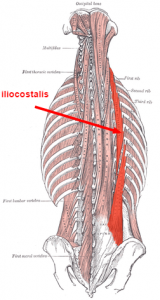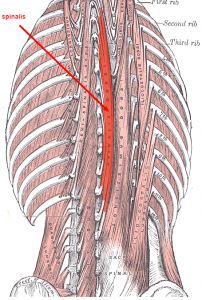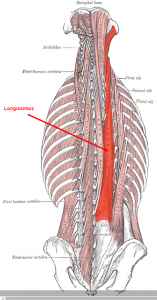I have written about the transversospinalis, the deepest layer of muscles to the spine, that include the multifidus, the rotatores and the semispinalis. In this post we will look at the muscles directly above the transversospinalis—the erector spinae muscles.
The erector spinae are three different muscles that run along the spine from the head to the pelvis. They are extensor muscles that work to straighten the spine and maintain its erect posture. In yoga a perfect example of the erector spinae at work is coming up to stand from a flat back posture with the hands on the hips.
Not only is this a clear example of the erector spinae at work, but the ability, or not, to perform this action can tell you all you need to know about the length and tone of these muscles in your body. From the flat back to a standing position the erectors along with the gluteus maximus and hamstrings
The three erector spinae muscles are:
- Iliocostalis
- Longissimus
- Spinalis
From the inside out the spinalis is closest to the spine and the iliocostalis the furthest away, leaving longissimus in the middle. Each of the three muscles can be broken down into three parts.
The erector spinae are sized differently depending on where they fall along the spine. It extends up and down the entire spine and is thicker in the lumbar area tapering slightly above and below. It is covered at its base by the thoracolumbar fascia and at the top by the nuchal ligament.
All three of these groups follow similar functions they are help the body bend forward, they extend the entire spine as I described in the beginning, and they also assist in the rotation of the whole spine with the exception of the spinalis that is only involved in the rotation of the cervical spine.
Any reader of the blog knows that the psoas is my favorite muscle and I think that the relationship between the psoas and the erector spinae muscles is one of the more important one in the body and one that is profoundly affected by our tendencies towards poor movement patterns and posture.
I’ll do another post soon on how the psoas interacts with the erector spinae muscles and how a tight psoas might affect these muscles.
***



